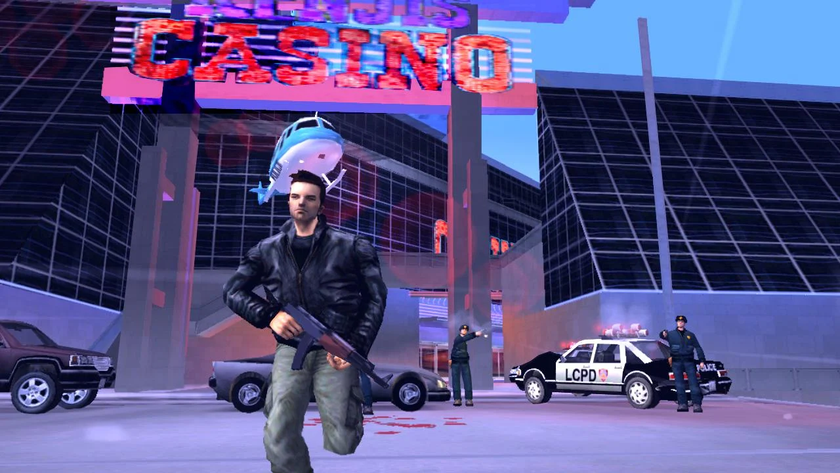Burnout Legends: Behind the scenes
We visit Team Fusion to find out how it's squeezed the juiciest bits of Criterion's crash-happy racer into PSP
Some people may have thought that cramming the best bits of Criterion's Burnout games into one 'best-of' package for PSP would be a difficult task; that to make it anywhere near as intense an adrenaline shot as the incredible console originals would be nothing short of impossible. So, all credit then to EA's Team Fusion, because that's exactly what it's achieved with Burnout Legends.
We visited Fusion at EA's Chertsey studio to find out just how difficult the process has been and discovered that even the team itself was initially doubtful that it could ever produce a genuinely worthy addition to the Burnout series on PSP. The game's executive producer, Rob O'Farrell, remembers the team's early reservations.
"On PS2, Burnout is fast-paced and aggressive; you've got other cars smashing into you, there's traffic and just so much going on. When we started Legends we thought, 'is PSP going to handle all that?' And we were actually really worried."
Unsure that it was even a plausible project, the team began work on some of the technical aspects of Legends at the end of last year, but it wasn't until it received PSP development kits a month or so later that things literally began to gather pace and the game started to feel like Burnout.
From that point on, O'Farrell recalls that the team was constantly pushing to get as much out of - and into - PSP as possible, although he appreciatively admits that Criterion's original code was a great foundation to work from.
The team also had the benefit of some expert advice from the Need for Speed Underground Rivals team at EA Canada which, having already tackled and overcome problems on its own project, helped Fusion to steer clear of many potential development potholes.
Sign up to the 12DOVE Newsletter
Weekly digests, tales from the communities you love, and more
With the project cruising comfortably in the right direction, the mammoth undertaking of shrinking masses of content down to a PSP-friendly chunk began in earnest - the original cars and tracks were all poly-reduced, with some courses being stripped from 130,000 polygons down to just 25,000.
Incidental elements also had to be reworked, with road sheen, sun flare and collision sparks all requiring attention to ensure the game would replicate Burnout's breakneck speeds, while still maintaining a healthy frame rate.
Legends' lead director, Jonathan Amor, drew our attention to the problems that arise from the average gamers' high expectations and perception of what PSP is capable of and the subsequent pressure it put on the team to work a minor miracle.
"The Burnout games are so technical with their speed, rendering and physics - they're some of the best games around and the Criterion guys are doing a superb job at pushing PS2 to the limit. The problem with PSP is that people think it's just like a PS2, but it's not quite that powerful. We've had to do a lot of technical tricks to make it feel exactly like Burnout, while running on PSP."
In the end, and after its initial concerns about ever achieving a suitably exhilarating pace, Fusion actually had to make adjustments to compensate for the hurtling velocity when viewed on PSP's high-resolution screen.
The size and brightness of tail and headlights were increased to make cars more visible, while traffic had to be removed from some Burnout 1 and 2 tracks because it actually hampered the gameplay, as the courses were never designed to be driven at such startling speeds.
Modifications also had to be made to ensure that PSP could accommodate certain modes. O'Farrell reveals that the team thought Crash Junctions would have to be dropped, never for a minute believing that the hardware's processor would be powerful enough to handle such a high volume of traffic.
Thankfully, Fusion's tech team worked some magic and Crash mode has made the final cut along with other favourites such as Pursuit, Eliminator and Road Rage.
To ensure a more instant 'gaming-on-the-go' experience, certain elements had to be removed or reworked to restrict loading times - an issue that has already dogged some PSP titles. There are no long intros into the levels, the camera flow that scans the aftermath in Crash mode is gone and the Crash nav is now a flat map as opposed to a spinning globe.
It's amazing to consider what Fusion has accomplished in just eight months. Besides Legends being technically comparable to its console origins, the amount of content that has been shoehorned in is quite staggering. The fact that it takes Fusion's QA department three days to play through - which, as O'Farrell points out, is a long time by its standards - is testament to just how much will be on the finished UMD.
While always remaining faithful to its source material, Fusion has made some definite improvements and worthy embellishments to the Burnout DNA for the portable version. It's difficult to appreciate just how impressive Legends is until it's zooming at 155mph in your hands, although the enormity of the achievement is by no means lost on O'Farrell.
"The team has just worked and worked and with Legends it's pulled something off that I just didn't think would be possible." And, if we're completely honest, neither did we, but this is one occasion where we're thrilled to be proved so wrong.
Burnout Legends will be released for PSP on 16 September

















